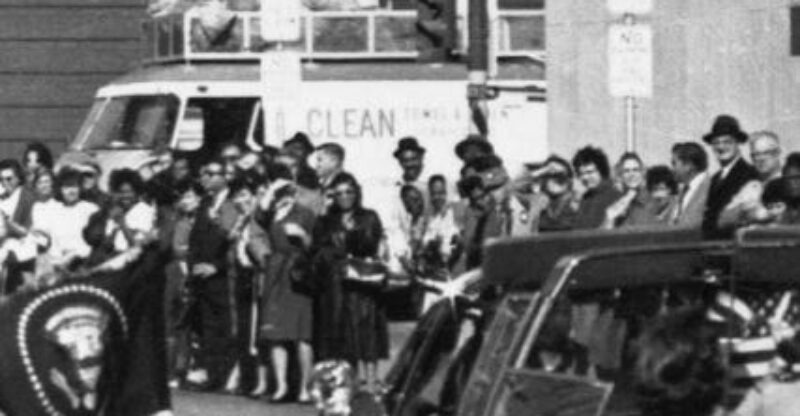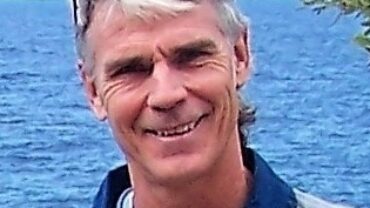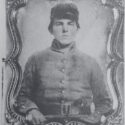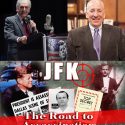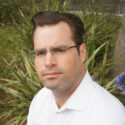Clean Towel III: Clothes and Daggers
By: James Day
A laundry truck parked at Elm and Houston when the president was fatally shot was never inspected by any assassination investigative bodies. This is the third in a series on the Clean Towel and Linen Service Co.

When she saw who murdered her son on national television, Marguerite Oswald was certain she had seen Jack Ruby in person somewhere before. But where?
Then she remembered.
It was the home of Leon Brachman, the affluent Fort Worth shoe merchant, philanthropist and ardent Zionist. A 1965 FBI document indicated Marguerite worked as a nurse in the Leon Brachman home. Marguerite believed Jack Ruby was among the 250 males in attendance at a circumcision party for the Brachman grandson in August 1963.
Brachman co-chaired the Fort Worth-area Israeli bond campaign with one Alex Hesselson, another shoe executive (Zesmer Bootery and Fair Shoe Boot Shop) and like Brachman, deeply invested in the Southwest Region of the Zionist Organization for America (ZOA).
Alex Hesselson, third from right, and other shoemen in a 1935 advertisement
Shoes pop up as a recurring motif: per Commission Document 156 Marguerite worked at a few shoe stores in both Fort Worth and New Orleans. So did Oswald himself (Dolly Shoe Store) as a teenage clerk in 1955. We will see shortly Bernard Weissman was a shoe salesman for a time. And, of course, it was store manager John Brewer of Hardy’s Shoe Store who followed “Oswald” into the Texas Theatre.
Alex Hesselson is also intriguing for our purposes as he utilized the services of construction handyman Robert A. Lesh — Lesh was hired by Clean Towel for a significant amount of work in May 1963. Lesh also seemed to be closely acquainted with other ZOA members. Lesh, it will be remembered, was murdered in 1968. His killer was never found.
We previously highlighted Clean Towel’s links to the Haganah and other Zionist groups in Southern California. Here, affiliations with Fort Worth Zionists now emerge. (Hesselson himself is known to have spent weeks in Israel.)
A French Connection
For the 1961 bond campaign — commemorating the 13th year of Israel’s founding — Hesselson and Brachman were joined on the committee by Leon Gachman. Gachman is known in assassination lore for befriending a Frenchman, Michel Roux, who visited the family the weekend of the assassination. The official story is that Leon Gachman happened to be in Paris in October and became friendly with the Hotel Proust clerk, Michel Roux, who was interested in getting involved in the restaurant business in the States. Gachman, who ran Gachman Metals in Fort Worth, invited him to look him up when stateside. So Roux did, arriving on November 21, even attending a college class at TCU with Gachman’s son at the same time the president was shot. He left for Mexico in early December. So much for looking for work in Texas.
Roux was the alias used by OAS (French Secret Army organization) fugitive, assassin and terrorist Capt. Jean Souetre, “aka Michel Roux aka Michel Mertz” according to CIA document #632–796. The OAS had failed in a 1962 assassination attempt on Charles de Gaulle (dramatized in The Day of the Jackal). That CIA document states Souetre was in Fort Worth on the morning of November 22 and in Dallas that afternoon. “The French believe he was expelled to either Mexico or Canada.” The document was never brought before the Warren Commission. The authorities seemed convinced the Michel Roux who was a friend of the Gachmans could not have been Jean Souetre the expelled assassin: they were two distinct individuals.
Jean Souetre
Jean Souetre (he also used the names Michel Mertz and Michel Roux) was a member of the French Secret Army Organization…
Recall we reported a Clean Towel employee rented an apartment a block from Fort Worth’s Meacham Field. This was in 1960, but the building’s owner was a Meacham Field aviation board member in ’63 and served under Gen. Willoughby in Gen. MacArthur’s Pacific staff in World War II.
Might Soutre, alias Mertz, alias Roux have utilized this safe house and pilot Joe Silverthorne for a flight out of Fort Worth to Mexico after the hit on the president?

A Ft. Worth safe house?
Souetre was also documented to have visited Lisbon, espionage capital of the world, in an attempt to recruit CIA support for another attack on de Gaulle in May 1963. Clean Towel’s Manuel Turetz was in Lisbon exactly when JFK was elected. As Portugal was neutral, tt was the wartime headquarters of the Joint Distribution Committee, the umbrella under which groups like the United Jewish Appeal operated.
To further complicate things, there really was a Michel Mertz, hero of the French Resistance and former SDECE (French intelligence) who sometimes used the alias of his rival, Jean Souetre, in his own clandestine activities! (Souetre said he and Mertz served together in Algeria from 1958–1959. Souetre also claimed it was Mertz, not Souetre, who was in Texas that weekend.) [Curiously, Peter Kross in JFK: The French Connection posited that it was Mertz who was arrested for passing out leaflets and getting into a brawl on a Paris street — exactly three months before Lee Oswald followed the same playbook in New Orleans passing out “Hands off Cuba!” leaflets, getting into a brawl, and subsequently arrested.]
A former SDECE officer, de Vosojil, observed that a colonel in the SDECE, de Lannurien, “had lunch with a group of right-wing extremists from Texas” at New York’s Harvard Club the week of the assassination. De Vosojil “believed that the meeting had something to do with the Kennedy assassination.”
Author Lamar Waldron identified a Michel Victor Mertz as a man “at the highest levels of [the] heroin network.” Florida mob boss Santo Trafficante, Jr., who took over from his father in 1954, inherited “his rackets in Cuba and Florida, as well as his father’s partnership with Meyer Lansky,” Doug Valentine observed in The Strength of the Wolf.
“By the early-60s, [Santo] Trafficante [Jr.] was the single biggest customer for the CIA-sponsored Asian Warlords heroin,” wrote Joseph J. Trento in The Secret History of the CIA. Lansky utilized a chain of Caribbean and Central American CIA-backed proprietary companies for money laundering, as well as real estate entities in Florida. Corsican mafioso Paul Damien Mondolini, an associate of Trafficante and Joe Bonanno, brokered heroin shipments out of Cuba for distribution in the U.S. According to Maurice Phillips in De Dallas à Montréal, Mondolini was reportedly chief of police in Saigon during the French occupation.
To say Mondolini had connections is an understatement. One of these was Michel Victor Mertz.
Another Mertz accomplice was Corsican trafficker Lucien Rivard. In 1959, Rivard was picked up by the new Cuban government under Castro and placed in an “immigration camp.” There were a number of relevant individuals imprisoned under Castro at this time, in addition to Rivard and Trafficante. At the same time, Jack Ruby visited Havana, something he would dismiss later as a social trip. But he did not mention how frequent he was visiting Cuba in August and September 1959. The HSCA obtained a CIA cable that stated Jack Ruby visited Santo Trafficante in the Cuban “immigration camp.”
A Warren Commission document indicates that “a Jack Ruby of Dallas” was the contact with a “large narcotics set up operating between Mexico, Texas, and the East.” Peter Dale Scott noted Ruby “had links to the Mexico-Chicago drug traffic, dating back to the 1940s.”
There was also more than one French spy-hitman in Texas beyond Mertz/Souetre/Roux. Murderer Jean Filliol checked into the Stoneleigh Hotel in Dallas on November 20. Filliol was a co-founder of the Cagoulards, a right-wing militant group Time magazine deemed “the French Ku Klux Klan.”
Still more, Henri Ernest Pugibet also checked into the Stoneleigh that week, per informant Allen Wright. Pugibet was an alleged killer of a secretary in the inner circle of Dominican Republic’s dictator Rafael Trujillo. Indeed, Pugibet — a Frenchman with Mexican citizenship — attempted to enlist Dallas businessman and gunrunner Norman Rothman in some of his DR business ventures. Decades later, on his deathbed, Pugibet is alleged to have confessed his role in the assassination.
And the man Pugibet sought out in Dallas, behind the veneer of a businessman, Norman Rothman was a gunrunner.
Gunrunning Jack
In the early 1950s, a “Rubenstein” arranged illegal arms exports out of Miami to Castro forces, according to informant T-2 (Blaney Mack Johnson). This Rubenstein utilized the Florida Keys, where he owned a cottage in Islamorada. Rubenstein contracted through Marrs Aircraft in Miami to transport the arms to former Cuban president Carlos Prio Soccaras.
Jack Ruby’s weapons contact in Cuba was pal Lewis McWillie, pit boss at the Capri Hotel in Havana, operator of a number of Dallas nightclubs, and at the time of the assassination an employee at the Thunderbird Hotel in Las Vegas, partly owned by Meyer Lansky. Among McWillie’s close underworld confidants was Dave Yaras, a major figure who factors into the Clean Towel narrative as we have seen.
When McWillie first came to Cuba in 1958, he worked at the Tropicana casino, operated by Lansky and one of Trafficante’s closest associates, none other than Norman Rothman. Waldron and Thom Hartmann noted in Ultimate Sacrifice, “The available evidence indicates that Ruby helped in Rothman’s gun smuggling.”
Ruby’s arms smuggling partner was gunrunning pilot Edward Browder. Browder, a Canadian, was an individual with extensive criminal history in both Florida and Cuba. In early 1947, Browder pleaded guilty to theft of U.S. government-owned arms in Georgia; he was indicted in Oklahoma for illegally exporting a P-38 airplane to Havana. A year later, he was sentenced to 18 months for violation of the Neutrality Act stemming from a plot to bomb Caracas, in a revolutionary plot against the government of Romulo Betancourt of Venezuela.
According to the HSCA, Browder cashed a check from Clemard Charles for $24,000. Charles was the business associate of George de Mohrenschildt, the geologist-socialite who befriended Lee Oswald for a time in 1962–63.
Was Weissman Really Innocent?
We saw in the previous article the proximity of Beverly Hills connections to events in Dealey Plaza. Among these was the main office of Louis Sugarman’s Carpet Engineers. This was the business that employed Bernard Weissman in Dallas for a few weeks in November 1963.
Weissman was named chairman of “The American Fact-Finding Committee” that seemingly sponsored the black-bordered, bitingly critical “Welcome Mr. Kennedy to Dallas” advertisement in the November 22, 1963 issue of the Dallas Morning News. The story is that Weissman, a young married man in New York, had freshly arrived in Dallas to pursue business opportunities at the behest of friend Larrie Schmidt. He took a job as a carpet salesman for Carpet Engineers at the beginning of November.
On the day of the assassination, Weissmann expressed shock when he became the unsuspecting figurehead on the anti-Kennedy advertisement.
Bernard Weissman was apparently caught unawares his name would be featured on the infamous ad
Ostensibly, Jack Ruby became incensed over the Welcome ad, apparently outraged that the “chairman” for this committee was a fellow Jew. It just happened to remind Ruby of the “Impeach Earl Warren” billboard off the Stemmons Freeway (we have already established that billboard connects to another individual linked to the assassination, Roy E. Davis). Ruby was so concerned about this billboard he took buddies Larry Crafard and George Senator out to the sign at about 4am to take a picture of it. An insurance policy of some kind?
Weissman promptly left Dallas after the president’s murder.
It is beyond the scope of this piece to explore how deep this really goes, such as Larrie Schmidt’s affinity with Gen. Edwin Walker and his firebrand conservatism (one must not forget that it was Walker whom Lee Oswald allegedly tried to kill in April 1963). Both Weissman and Schmidt joined the Young Americans for Freedom, an outfit we have discussed previously as sponsoring speeches by not only Walker but also Christian Zionist Rev. Dr. Theodore Jackman (another suspect in the assassination).
Columnist Drew Pearson, interestingly, identified Weissman in a Nov. 29, 1963 article as a “shoe salesman.”
But let’s further examine Weissman’s employer for the few weeks he was in Dallas during November 1963.
Carpet Engineers placed ads in both Southern California and Texas, boasting of offices in Fort Worth, Dallas, and Beverly Hills. Its Beverly Hills location in 1963 was 345 N. Canon, a half-mile from the City National Bank Building and law offices of Clean Towel’s attorney, Sid Levine.
Carpet Engineers only started advertising in Texas in August 1963:

The phone number of the Beverly Hills office only started in August 1962 (co-owner Jerry Frank arrived from Chicago that summer). The phone number in Texas only started in July 1963.


Respected carpet czar Louis E. Sugarman was president, although Sugarman’s more successful and better known enterprise was Decorative Carpets.
One cannot help but wonder how much of what we have accepted as fact, as truth, at face value, is really nothing more than an act. This idea can be exemplified in a Feb. 1964 puff piece featuring “Jerry Frank,” Sugarman’s co-owner of Carpet Engineers, in which Frank boasts how struggling actors make good carpet salesman:

This odd focus on obscure Jerry Frank continued, in articles picked up nationally:

Might these be decoys, coinciding with the trial of Jack Ruby going on in Texas at the same time?
By 1964 it is as if Carpet Engineers vanished into the ether.
On the night of November 22, Jack Ruby attended a memorial service for the slain president at his synagogue, Congregation Shearith Israel — Alex Hesselson’s synagogue as well. Hillel Silverman was rabbi, who arrived in Los Angeles in 1964 as senior rabbi of Sinai Temple on the city’s westside. Henry Traub, a golfing buddy of Clean Towel’s owner Manuel Turetz and lawyer Sid Levine, was heavily involved at Sinai Temple.
Not only did Silverman know Ruby well but as president of the ZOA’s Southwest Region he would have been familiar with Rev. Ted Jackman — Jackman was a frequent speaker for ZOA at the exact time.
Coda
What were the reasons the Warren Commission and subsequent investigations into President Kennedy’s murder ignored the presence of the Clean Towel and Linen Service vehicle?
Was it considered innocuous, as has been argued?
Or would it have opened embarrassing windows into an incredible amount of overlap among organized crime, individuals long suspected or associated with the Kennedy assassination, a compromised FBI and law enforcement in general, and a significant presence of Zionist extremists? Might it have forced a more honest and objective scrutiny into how November 22, 1963 came to happen?
And perhaps it all would have been a clean getaway — if not for Jack Ruby injecting himself into the drama like a deus ex machina, silencing Oswald forever.
Why?
“Everything pertaining to what’s happening has never come to the surface,” Ruby said to the press in March 1965. “The world will never know the true facts of what occurred, my motives. The people who had so much to gain, and had such an ulterior motive for putting me in the position I’m in, will never let the true facts come aboveboard to the world.”
“Are these people in very high positions?” a reporter asked.
“Yes,” Ruby said.
Shortly before his death from cancer in 1967, Ruby passed a note to Dallas Deputy Sheriff Al Maddox. The note said that it was a conspiracy and his role was to silence Oswald:
Addendum — Dave Yaras/”Mr. Kleen”
We have seen how violent mobster Dave Yaras ran his own Klene (sometimes Kleen) Towel and Linen, and that records show a phone number traced to Yaras’s son called Manuel Turetz’s company. We have new information to present:
In September ’63, Yaras, his son, and other Cosa Nostra cronies met with LA County Supervisor Ernest Debs, “allegedly a payoff man for big people in L.A.,” according to an FBI notecard (p. 27). There’s a Clean Towel link with Debs: he worked closely with its lawyer, Sid Levine:
James Day’s has a BA in Latin and has been studying and reading Roman history and literature in the original Latin for almost thirty years





